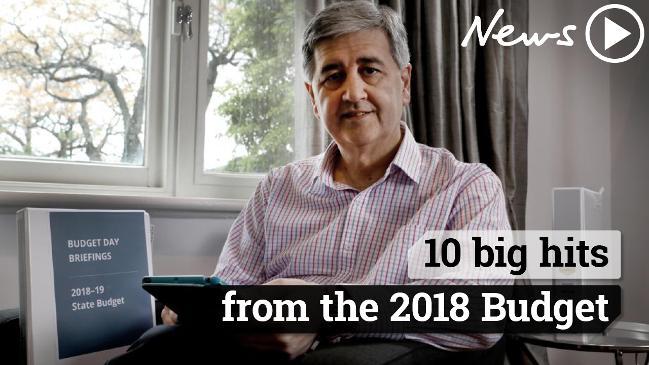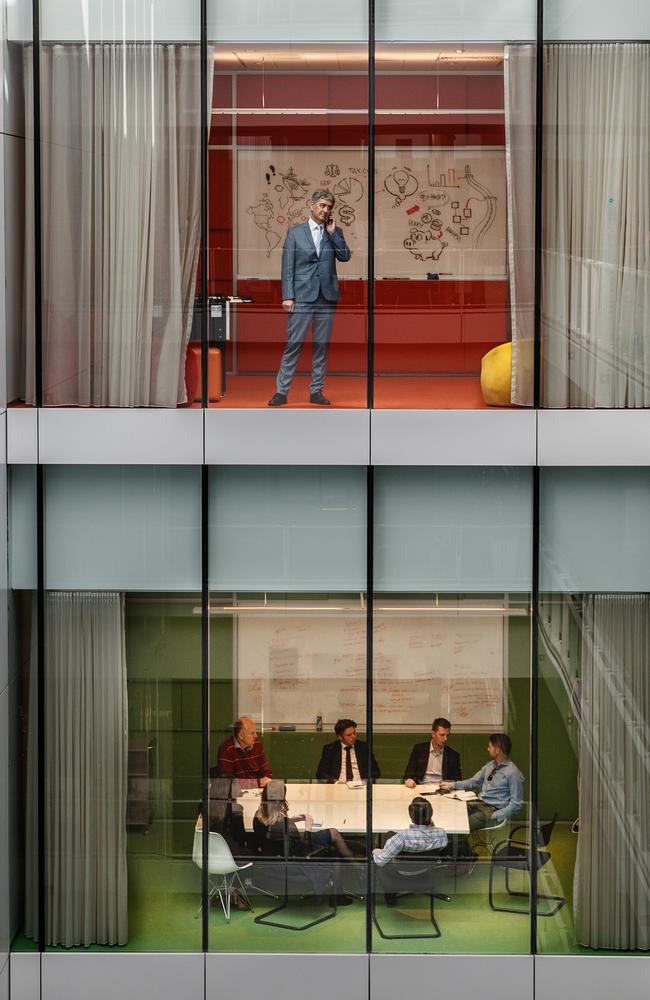David Penberthy: State Budget 2018 — new political narrative of state is steady as she goes
A NEW government’s first Budget is an exercise in storytelling — around what the new government is about and what it isn’t, says David Penberthy.

Opinion
Don't miss out on the headlines from Opinion. Followed categories will be added to My News.
- Opinion: Solid blueprint for future but debt a key concern
- Opinion: Budget has teeth but can Libs sell it in the suburbs?
- State Budget 2018: Your five-minute guide
- 4000 public service jobs to go over four years
- What the Budget means for your area
- Liberals pick fights with wealthy and powerful
A NEW government’s first Budget is an exercise in storytelling.
It tells a story around what the new government is, and it also tells a story about what the new government isn’t.
For all the thundering by the public sector unions about how the sky is about to fall in, this is a very modest, moderate Budget that makes the slightest and most sensible of cuts.
To this end, the Marshall Government has used its first Budget to reassure South Australians that it’s not the Newman government (rolled after a term trying to sack half of Queensland), and it’s not the Abbott government (the leader of which was knocked off midterm after breaking every key promise).
It’s a small-l liberal Budget from a small-l Liberal Government, a managerial, middle-of-the-road government, that in the eyes of hard-line conservatives will be seen as having raised the white flag in acknowledging that Adelaide is a government town with no stomach for scorched-earth economics.
Recent political history in SA — principally the disastrously ham-fisted effort by former Liberal leader Isobel Redmond in advocating heroic public-service jobs cuts — means that taking the axe to the public sector is officially a no-go zone in SA.

Steven Marshall was at pains to stress during the campaign that the public service had nothing to fear from a Marshall Government.
Whatever the Public Service Association says, he remained true to that promise on Tuesday.
The job reductions of 4000 earmarked by Rob Lucas are the tiniest cut imaginable, only a few hundred more than what Labor had scheduled, and could be easily achieved through natural attrition with no discernible impact on services to taxpayers.
When you compare them as a percentage with the kind of cuts made in the private sector at times of necessary belt-tightening, these blokes have barely laid a finger on the size of government, which remains far and away our state’s biggest employer.
PODCAST: OFF THE RECORD — SA BUDGET SPECIAL
Politics always involves exaggeration. Governments always overcook the incompetence of their predecessors; oppositions denounce the heartlessness and stupidity of those who assume the reins of power. The truth is that things now are nowhere near as bad in SA as the Liberals claim. Conversely, the cuts outlined on Tuesday are nowhere near as harsh or inappropriate as Labor says they are.
The last time a new Liberal government brought down its first budget in SA, the state Labor government had casually lost a cool $3.15 billion through the State Bank collapse, necessitating genuinely radical reforms (which by and large were squibbed by the too-nice-by-half Premier Dean Brown).
There is no such crisis this time. The tax burden has been relieved on business — commendably — and all our ESL bills have come down.
But save for sloppy overspending across key departments, the most notable being in health at the new RAH, all the crises the former government presided over were less economic than abysmal failures of people management such as Oakden, the pathology scandal and TAFE.
As such there is some financial tidying in those areas to compensate the victims.
But there is no cavernous budgetary black hole, economic growth is promising and the employment rate has been steadily improving. The Marshall Government doesn’t need to slash and burn to save the state. Politically, it knows it would be signing its own death warrant if it did so. It is the right time for the level-headed, balanced approach taken by Rob Lucas.
The usual vested interests will complain about the closure of TAFE campuses as an attack on vocational training. Good luck making out that argument, as we learnt last term that, rather than being a sacred cow, TAFE is more of a dead duck, with many graduates emerging with diplomas not worth the paper they were written on. It would make sense for the new government to shift back to the more tailored and workplace-focused industry group-sponsored training that was largely shut down by the Weatherill government last term.
If they can flog off some land for affordable housing as part of the bargain, good luck to them.
Of course, power prices remain the one big issue in terms of cost of living for families and cost of operating for business.
There was no silver bullet in Tuesday’s budget to help on that front. This is the number-one issue that was bungled by Labor during the past couple of terms in its headlong rush towards a renewable future, with scant regard for the key question of whether renewables were yet reliable and affordable enough.
It is of course the same issue that is the subject of seemingly intractable and lethal ideological divisions within the federal Liberal partyroom.
Perhaps the Marshall Government would argue that whatever relief can be offered there can only come from Canberra, or flow on at the state level from action from the Commonwealth. As things stand there was nothing I could see on Tuesday that’s going to save anyone money on their power. That aside, it’s a pretty non-controversial budget from a man in Steven Marshall who is clearly hoping that the art of being unassuming will prove the key to lasting electoral success.



